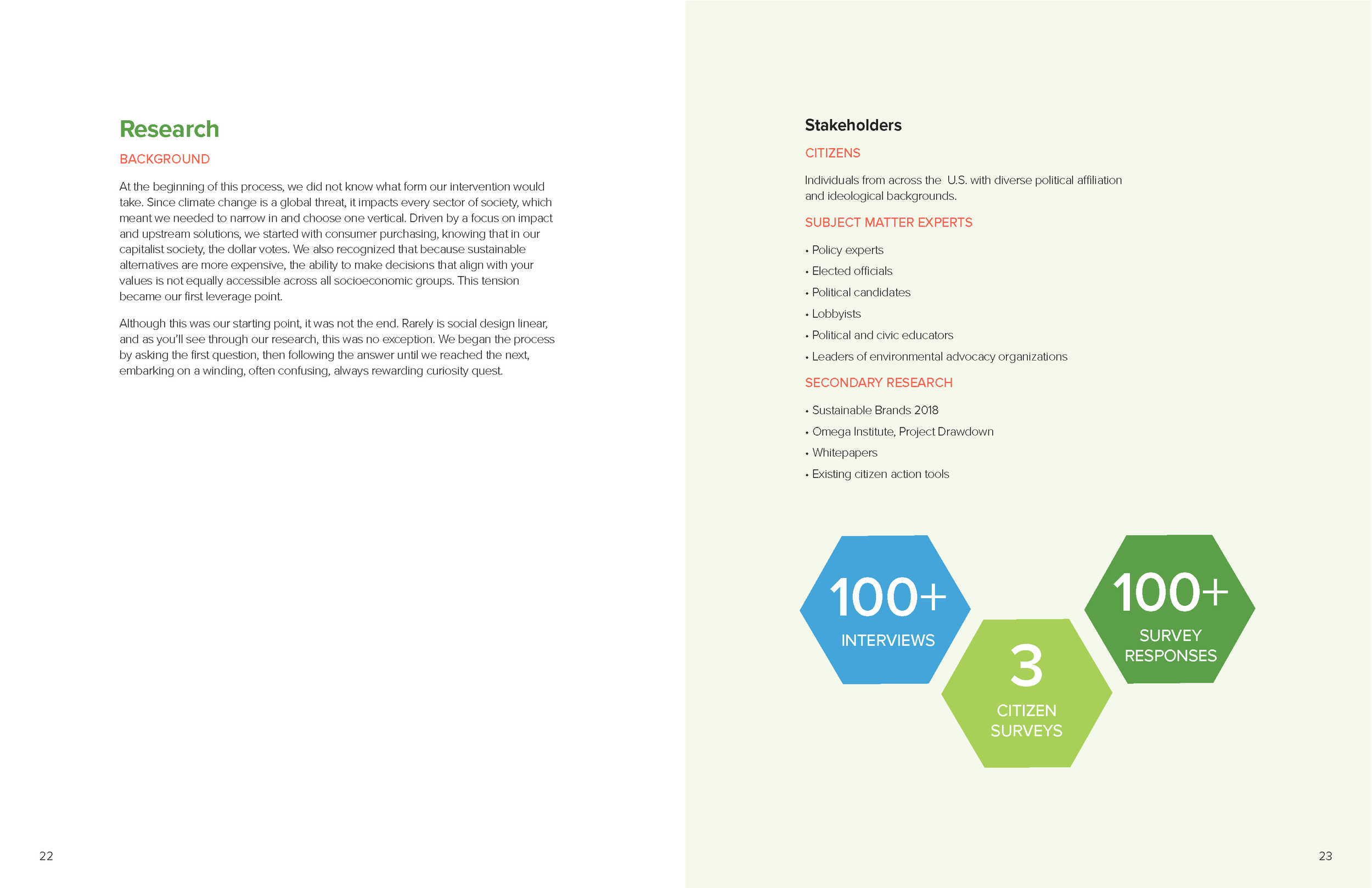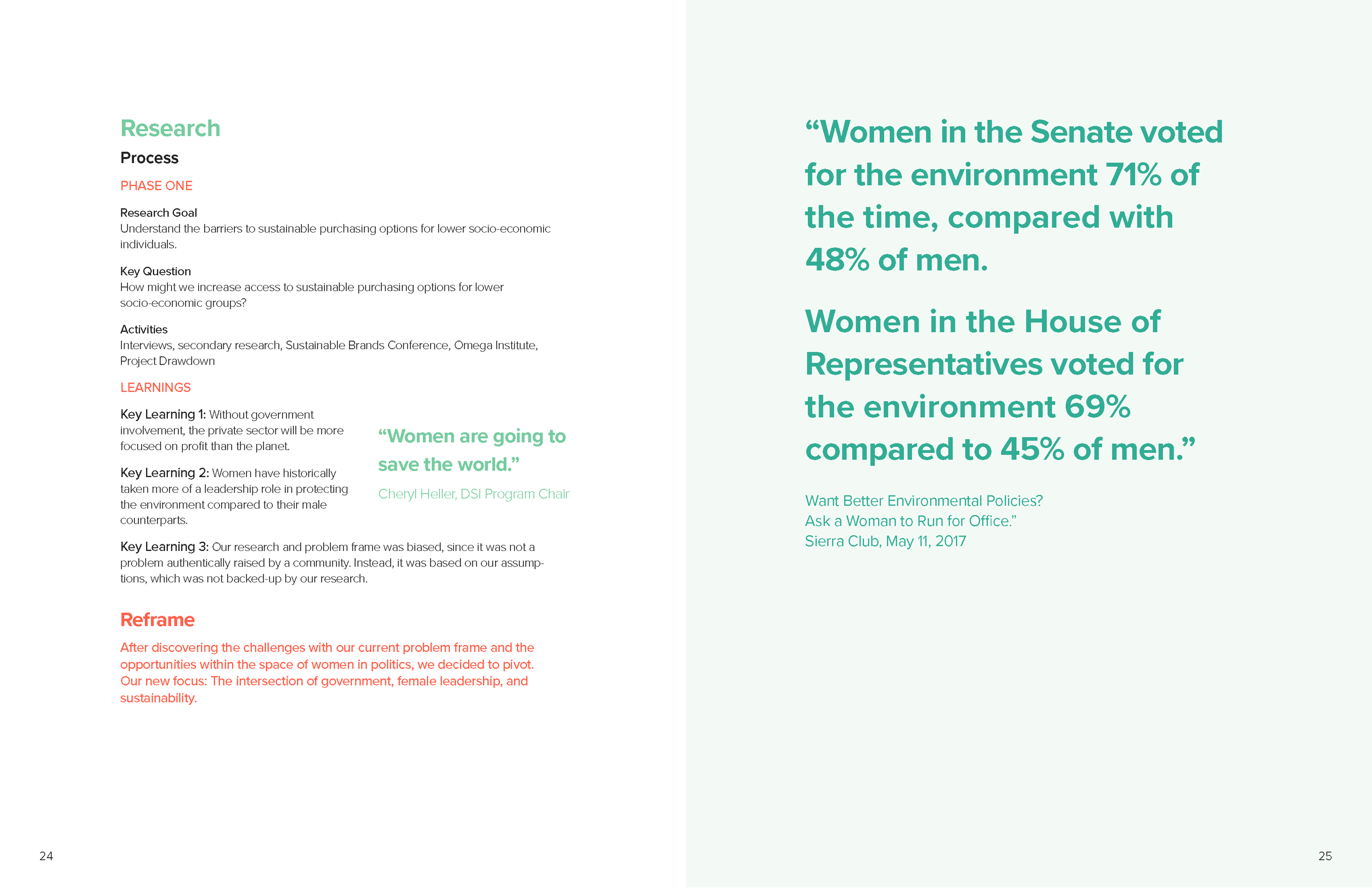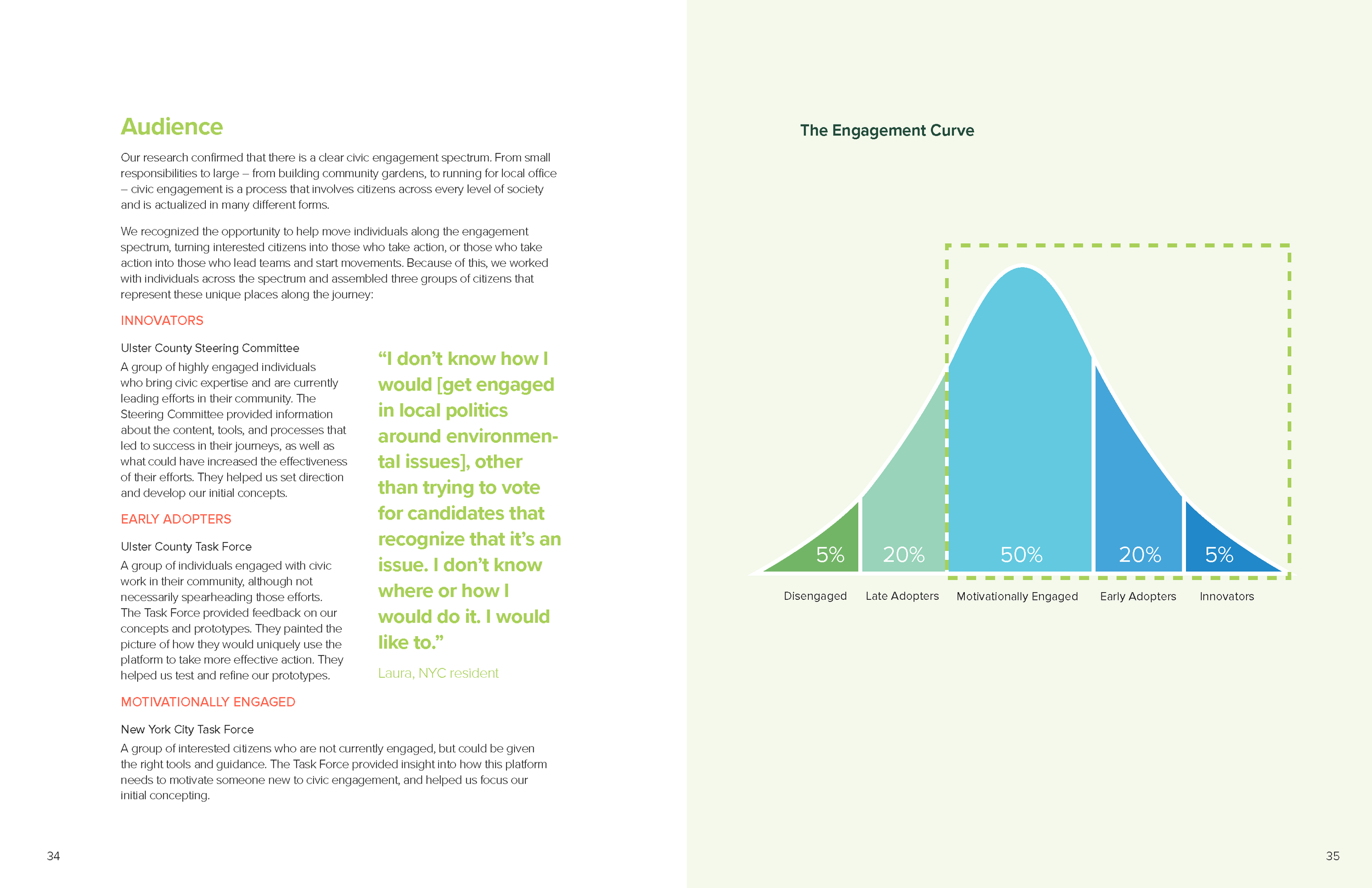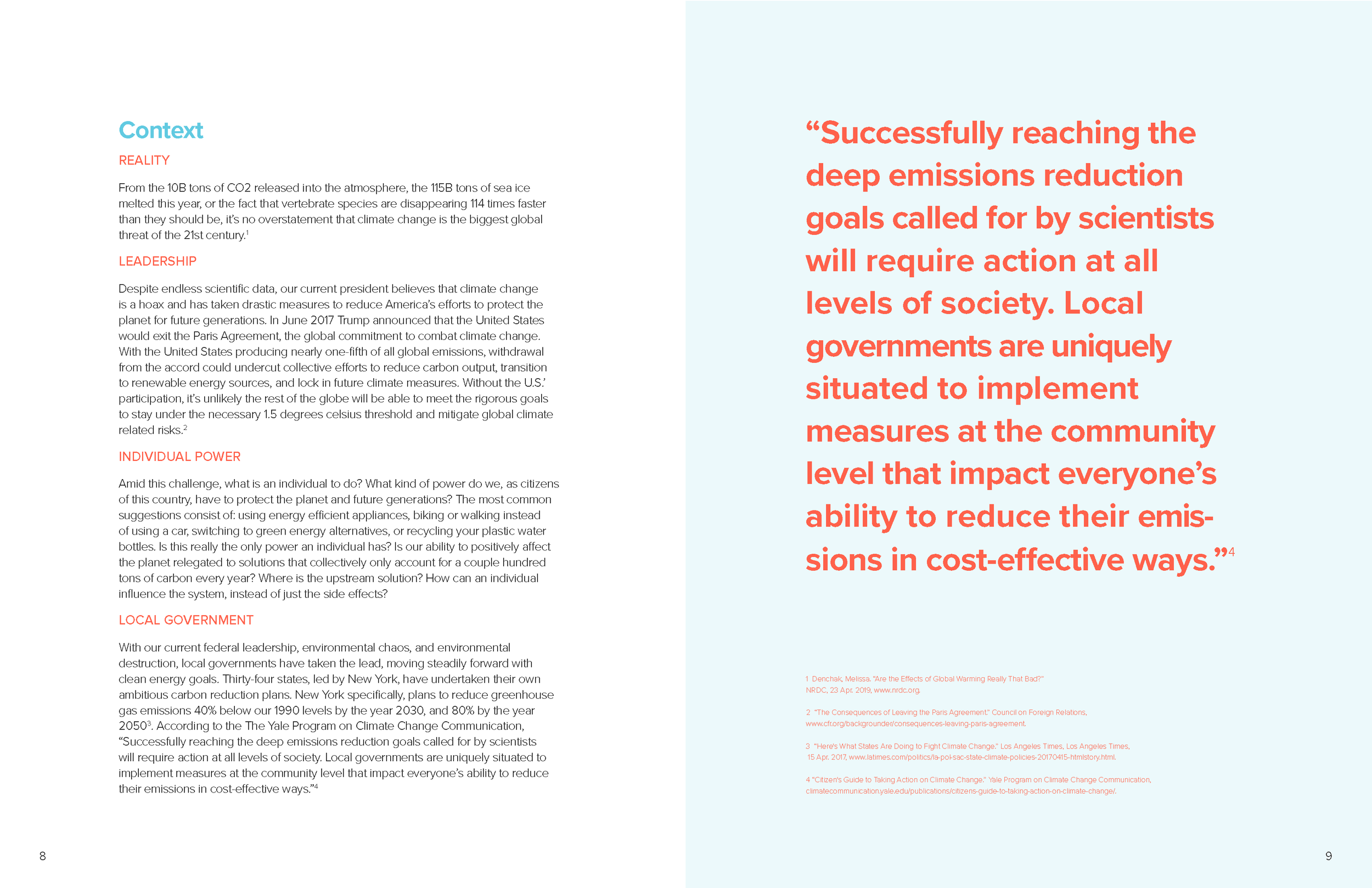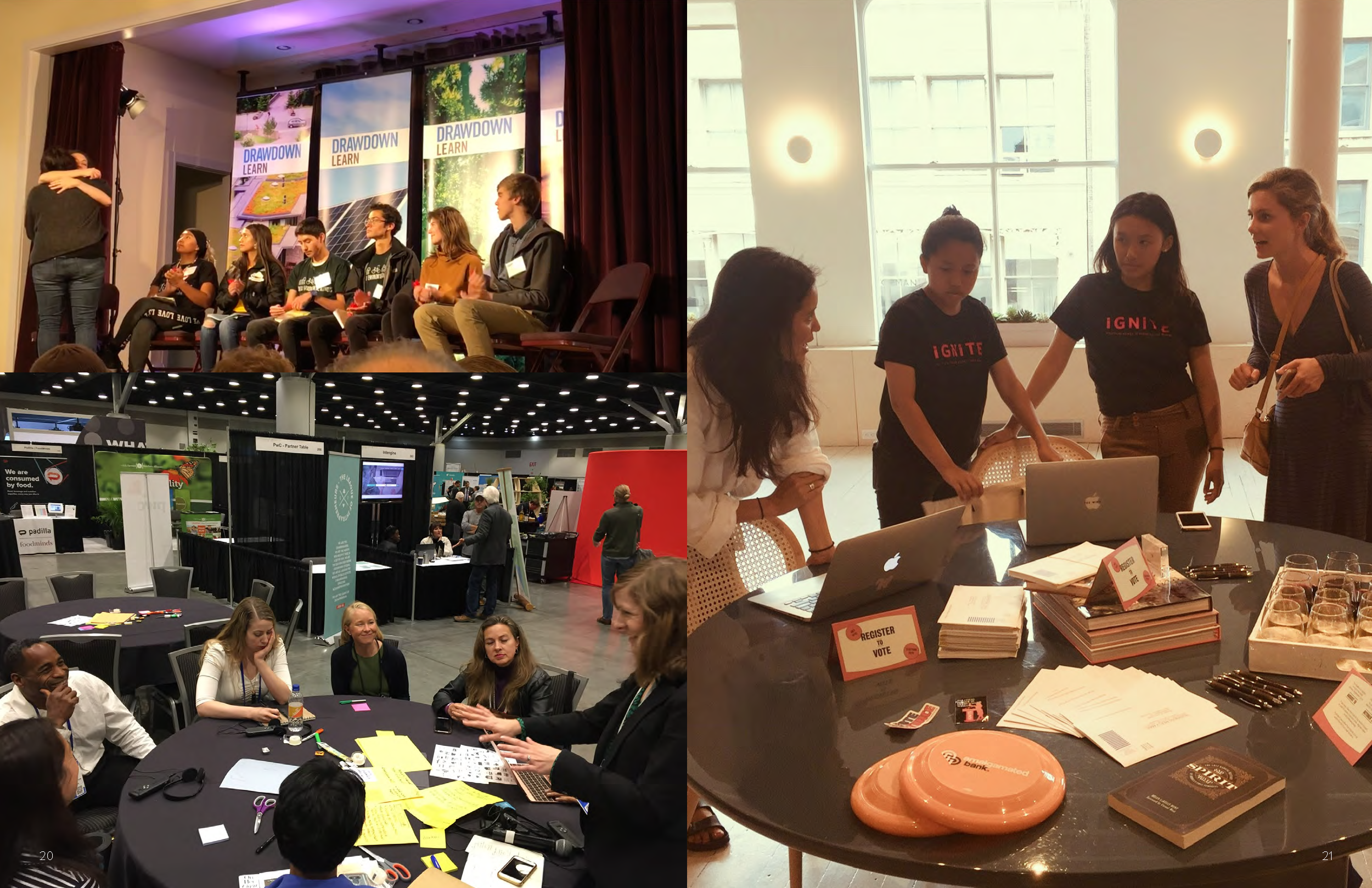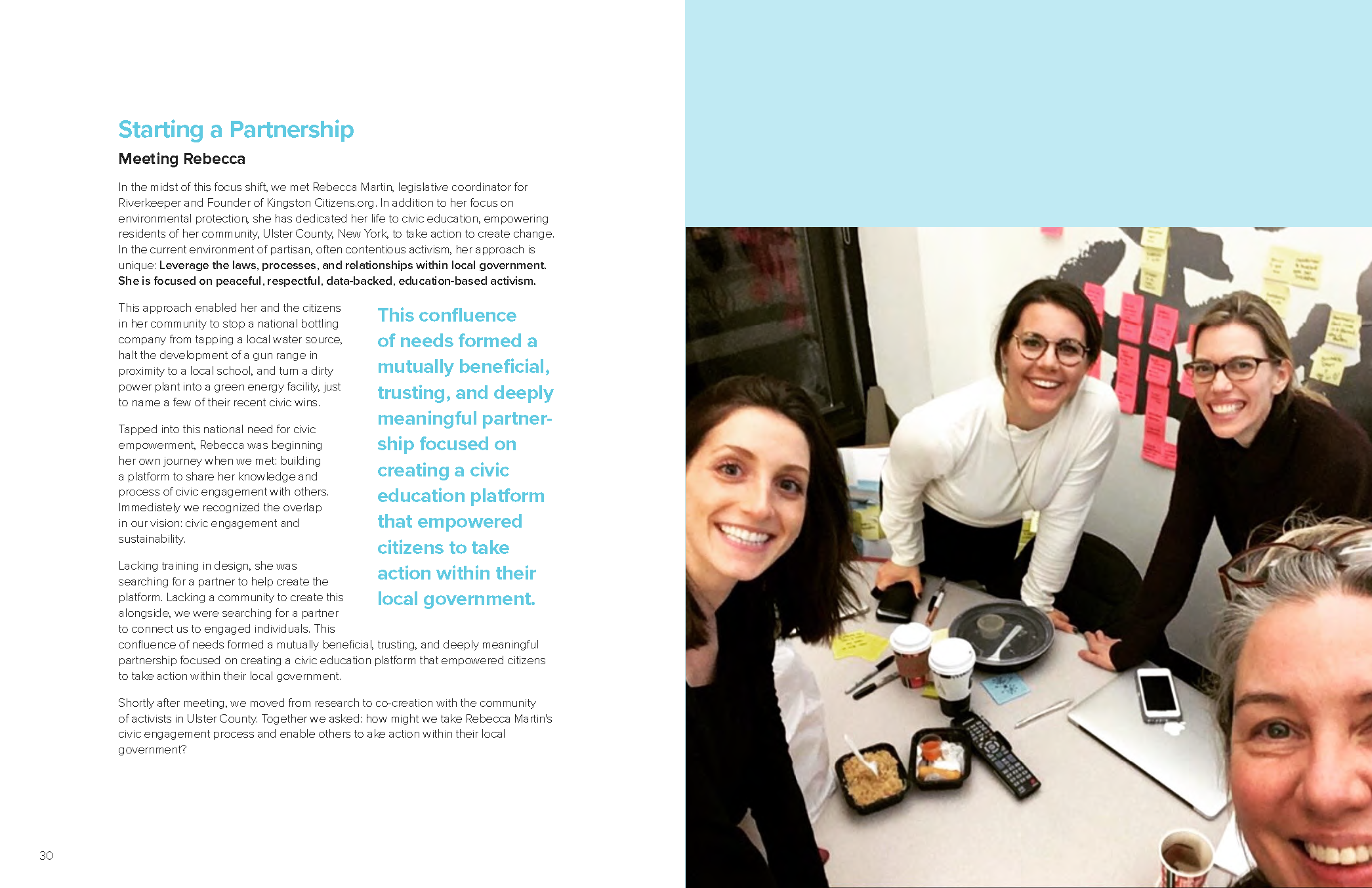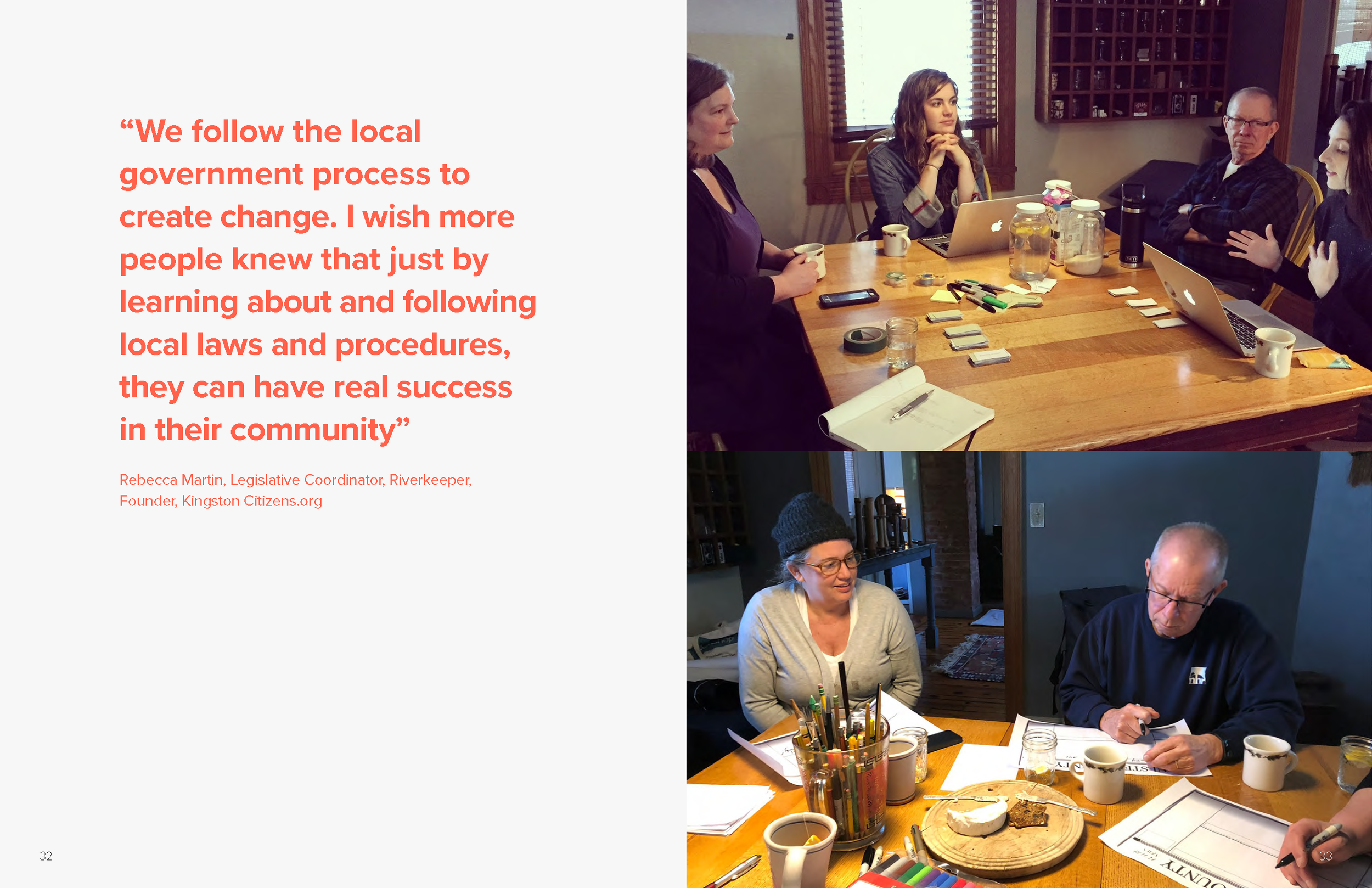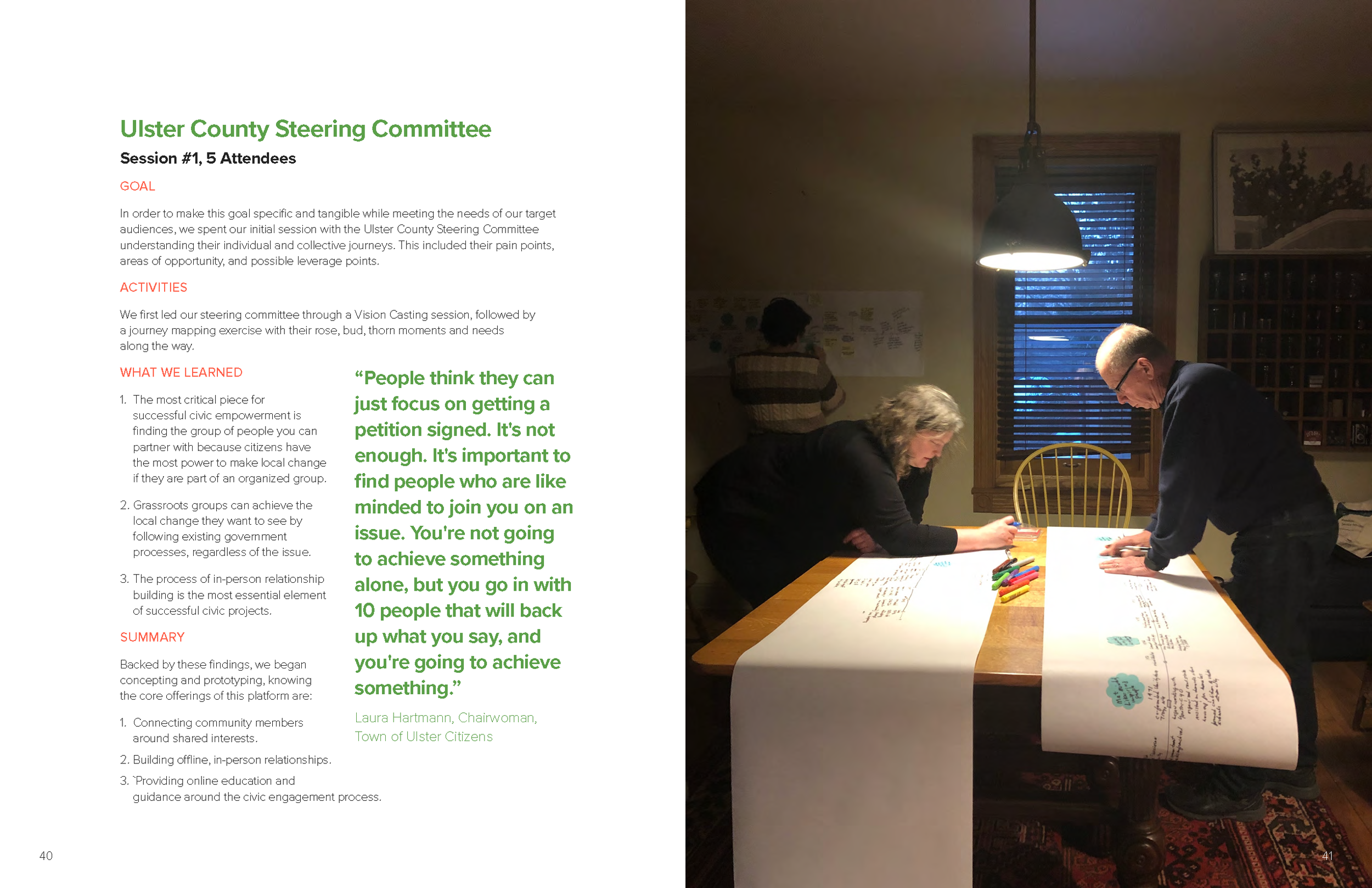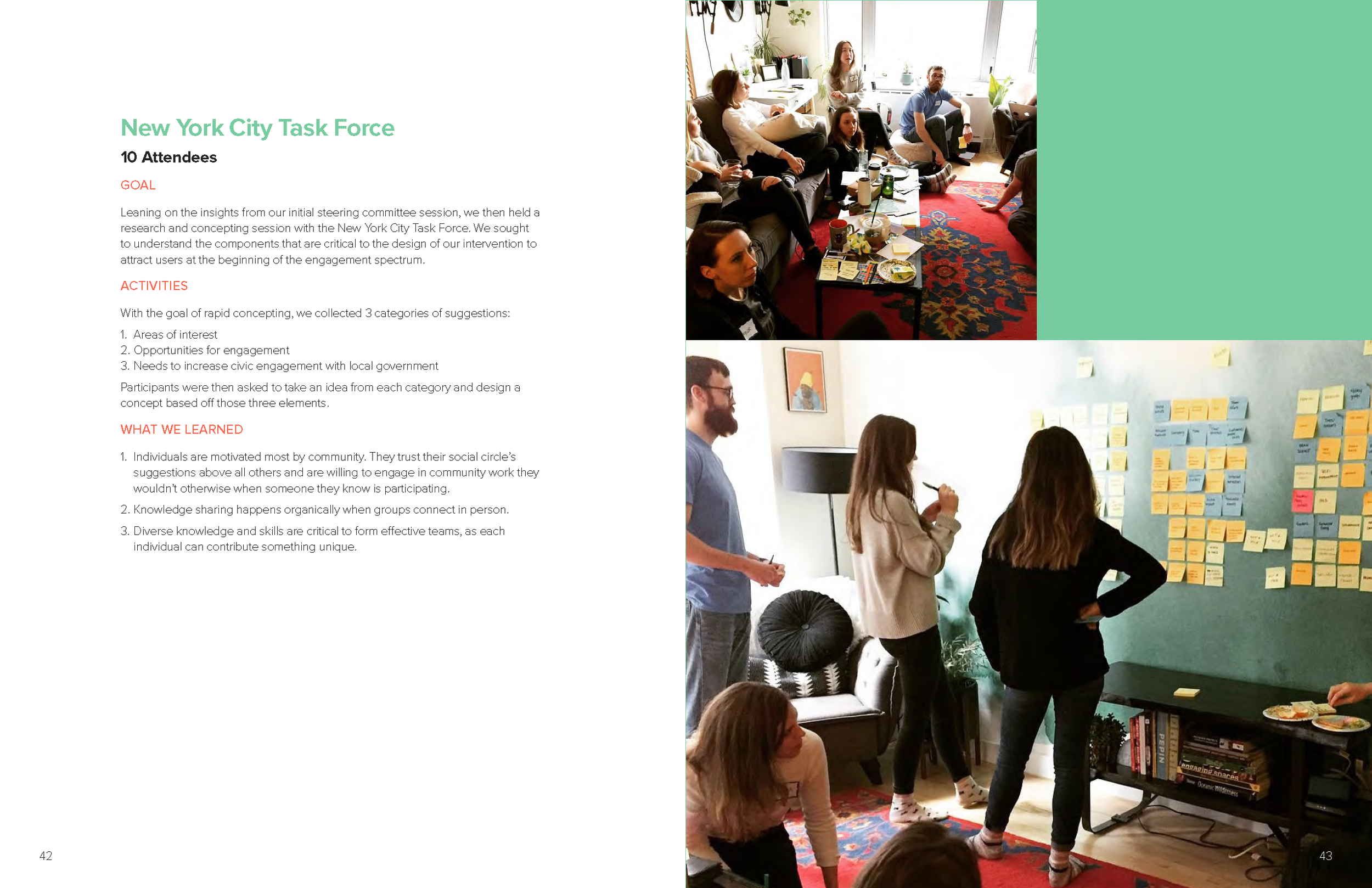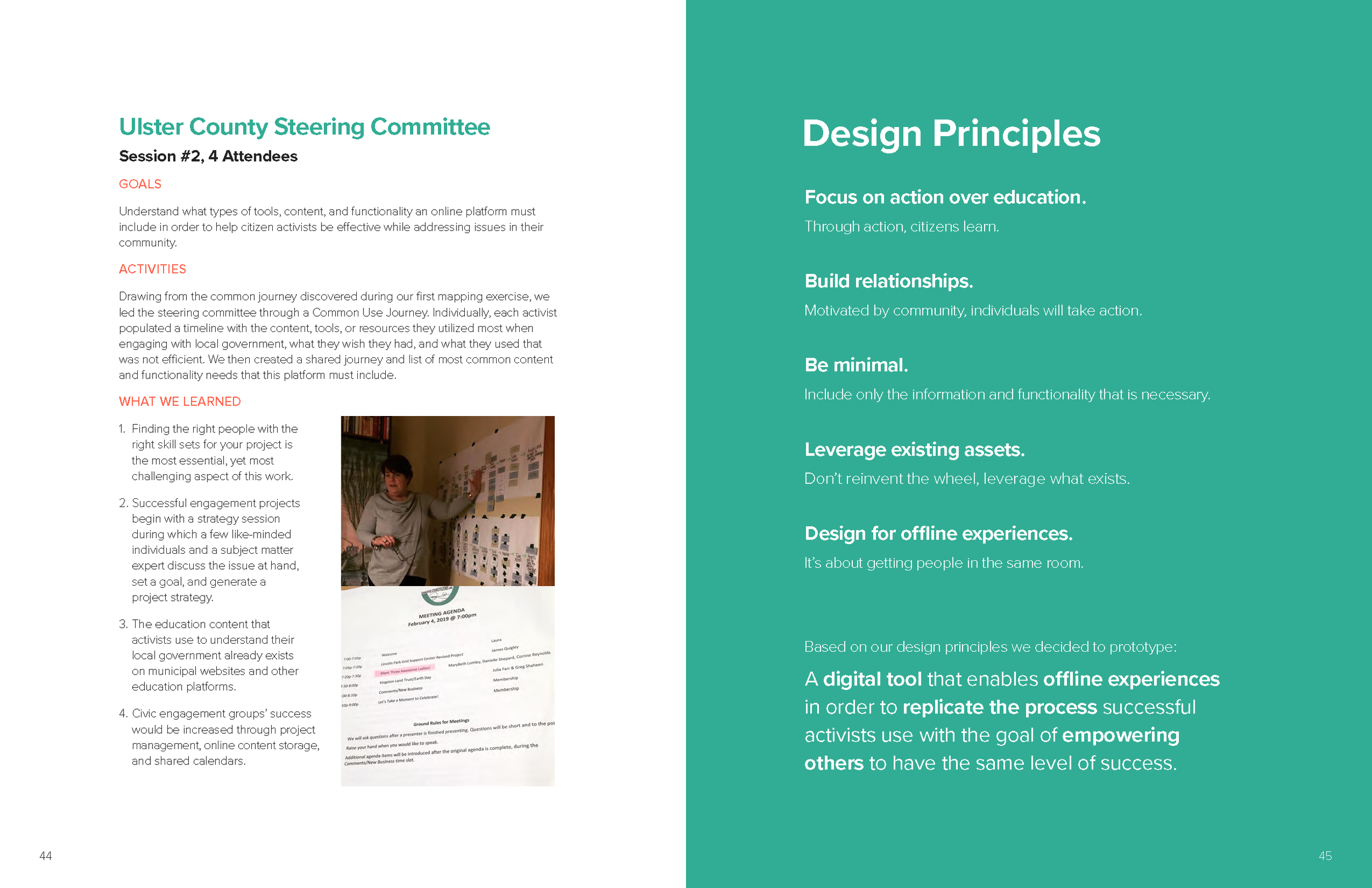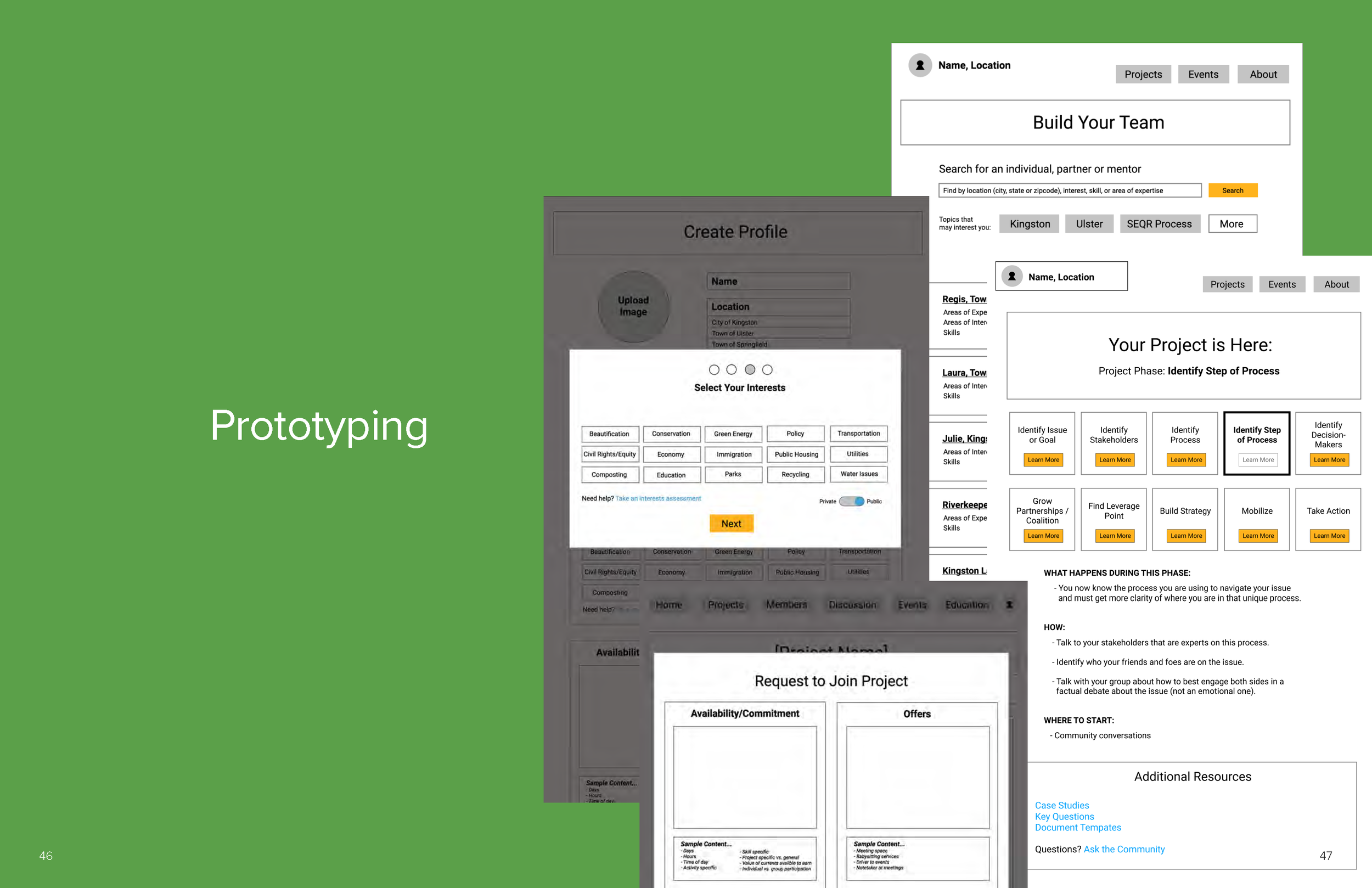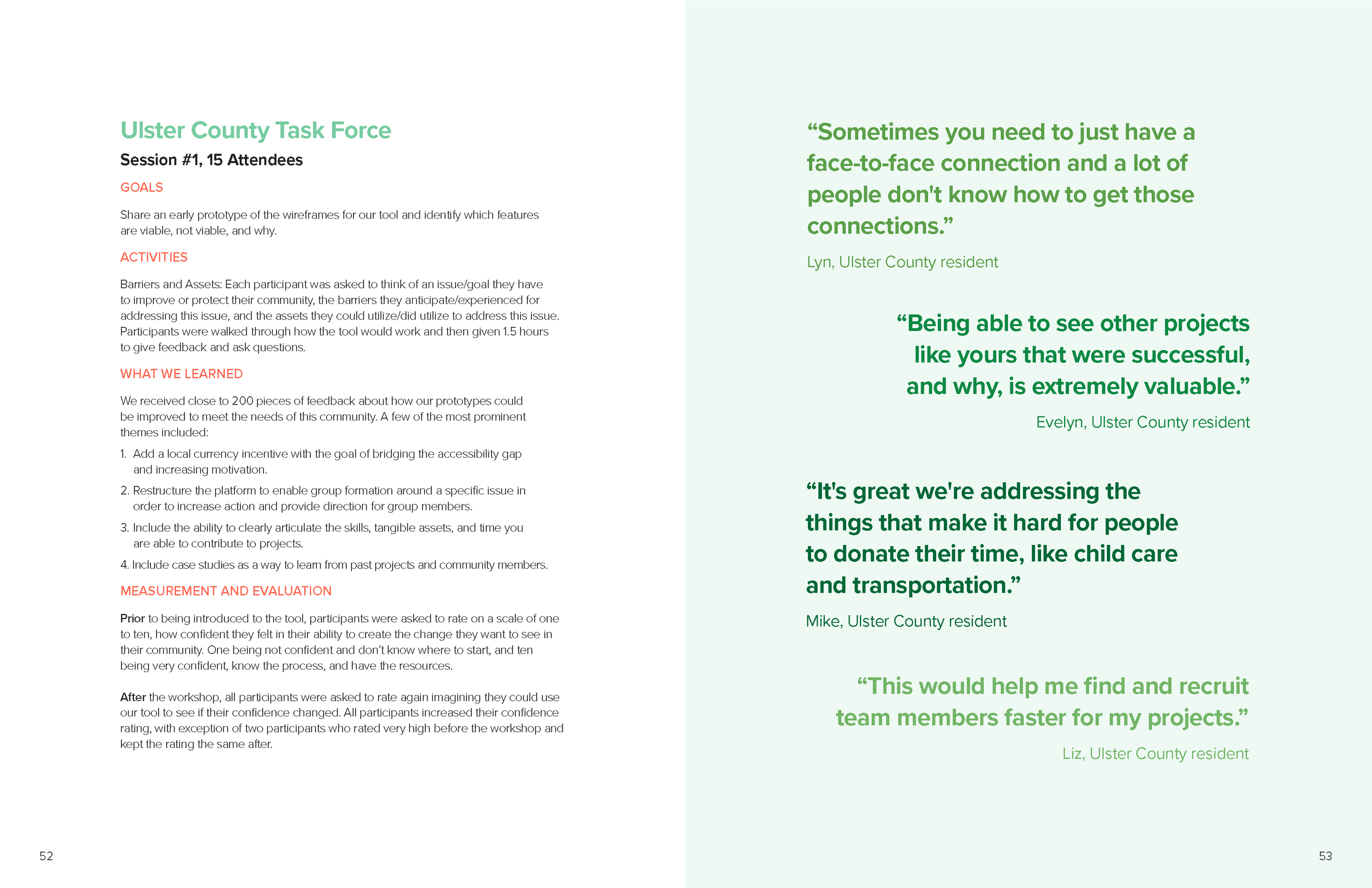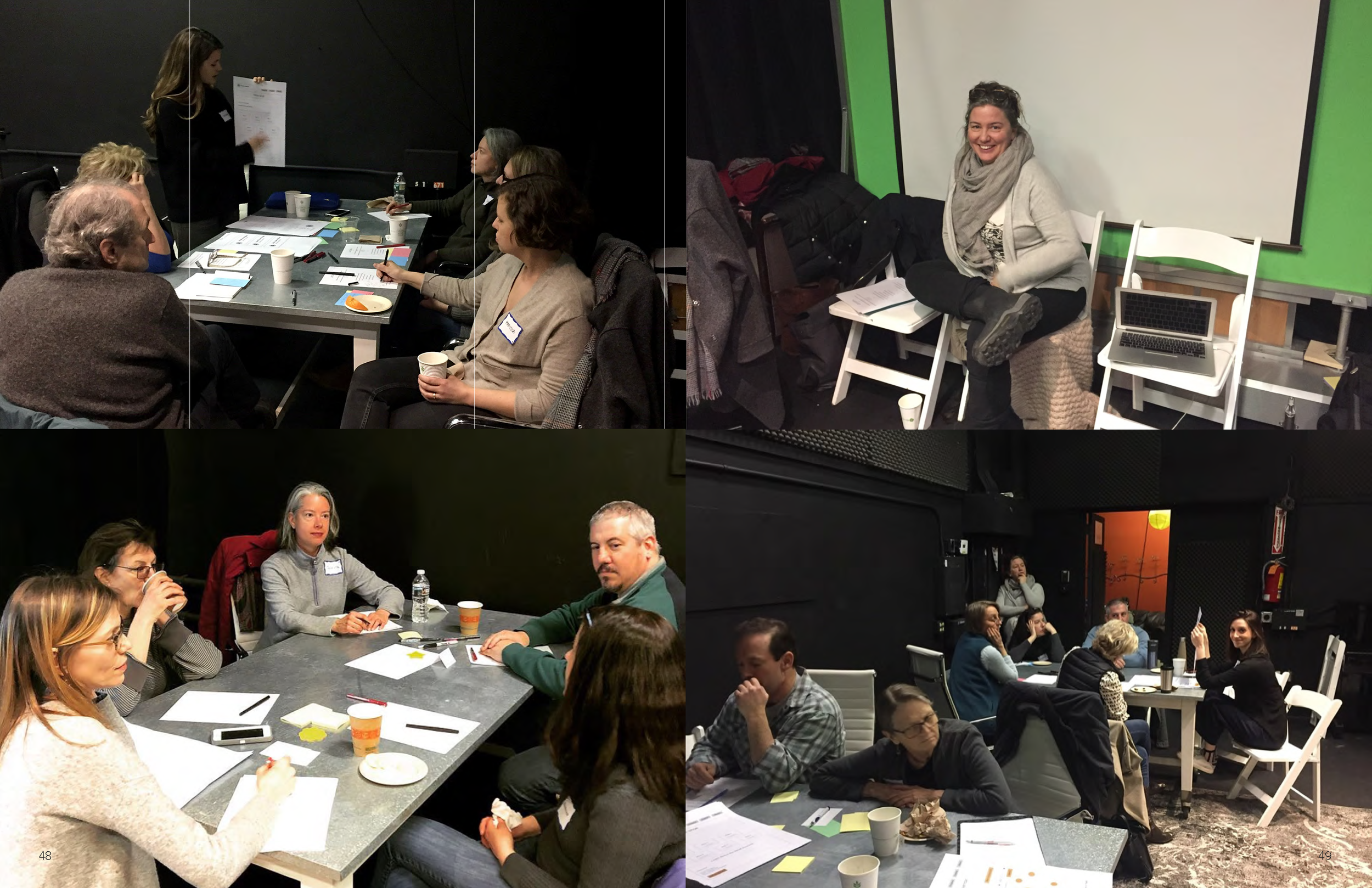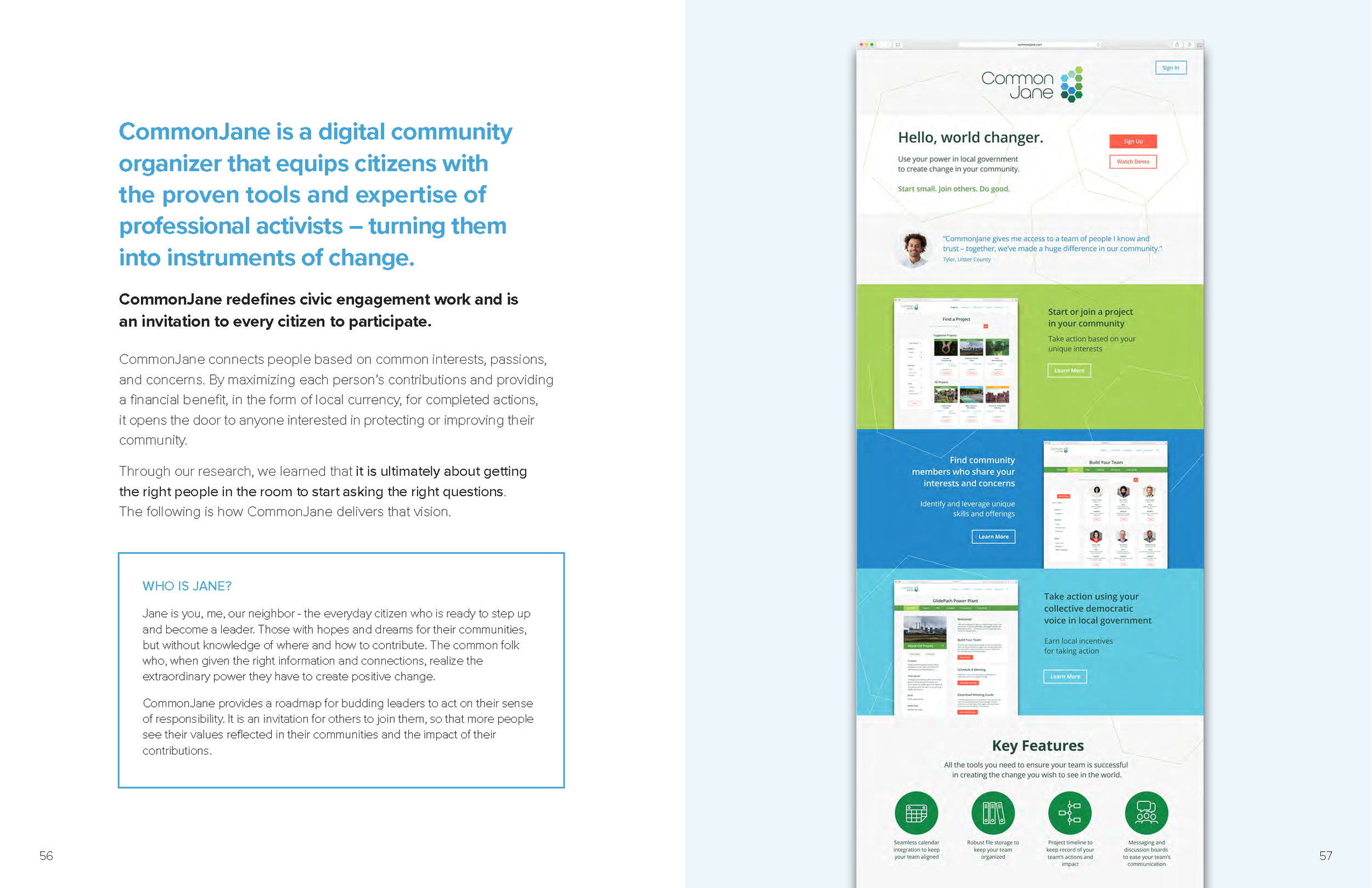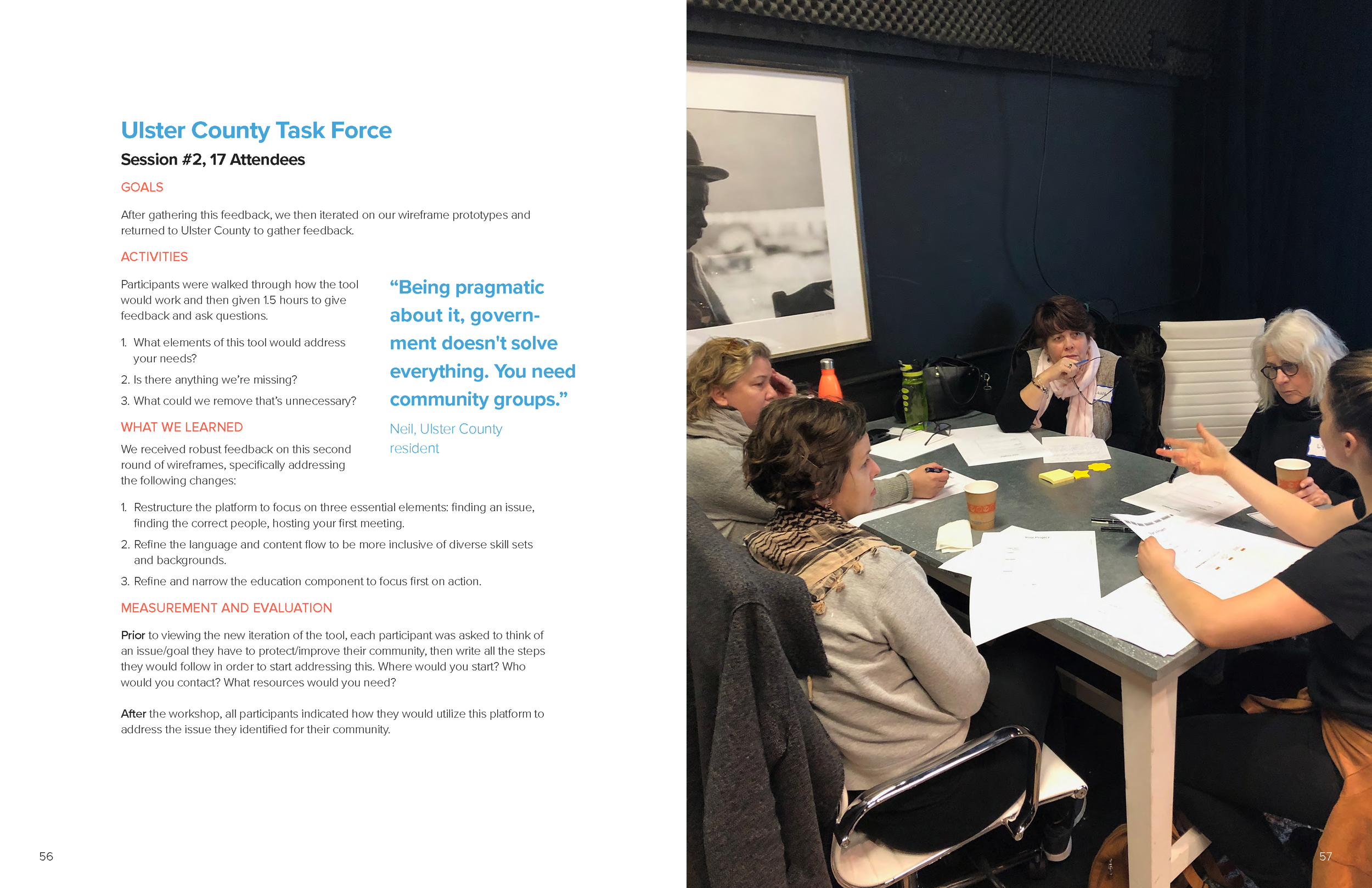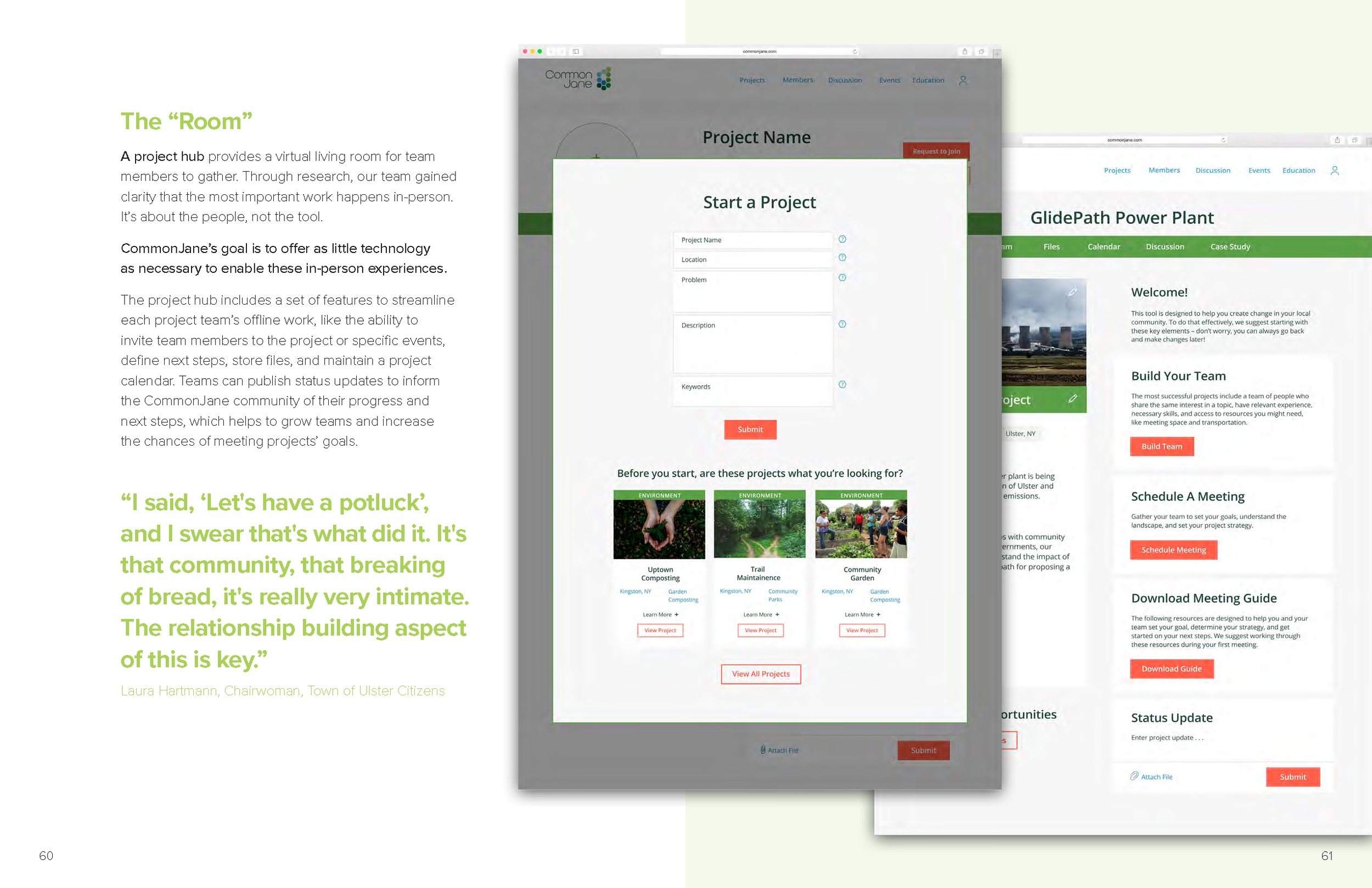Civic Engagement for 2019
A modern strategy for community activism
OBJECTIVE
The goal was to understand the current state of civic engagement, identifying the leverage points for sustainable local efforts.
OUTCOME
A first of its kind strategy to civic engagement: CommonJane - A digital community organizer that brings individuals together around shared interests and skills - regardless of socio-economic status, experience, age, or time commitment.
Timeframe: 18 months | 2018 - 2019
Team Size: 3 members
Research & Problem Framing
Research for this project was conducting alongside a robust set of stakeholders and focus groups.
Stakeholders
CITIZENS
Individuals from across the U.S. with diverse political affiliation and ideological backgrounds.
SUBJECT MATTER EXPERTS
Policy experts
Elected officials
Political candidates
Political and civic educators
Leaders of environmental advocacy organizations
SECONDARY RESEARCH
Sustainable Brands 2018
Omega Institute, Project Drawdown
White papers
Existing citizen action tools
Partnership
Critical to the development of this intervention was the partnership with a group of activists in Ulster County, New York. They served as the model community for effective civic engagement and an invaluable sounding boards for the project’s design.
“We follow the local government process to create change. I wish more people knew that just by learning about and following local laws and procedures, they can have real success in their communities.”
“Getting to see the tangible outcomes we are striving for, helps us all align around what success should look like. It also helps me think more strategically about the variety of ways I can support this vision.”
Measurement and Evaluation
Measurement and evaluation tools were used through the project to create tangible metrics of success, and to bring our partners along through co-creation.
Prototyping Assessments
A scaled rating from prototype participants at the beginning of a workshop and then again after to measure their confidence in our intervention’s effectiveness, was a simple marker for whether the design was on the right track.
Theory of Change
A theory of change paints a picture of the purpose and effect intended for the design intervention.
INPUTS • Provides value to citizens and drive change, include citizen-provided information related to their skills, interests, knowledge, and availability for civic projects. As well as, providing access to educational resources about how their local government works and proven strategies for successful engagement.
OUTPUTS • These tangible elements of the intervention center around informing and educating citizens about issues, their local government, fellow community members and potential partner organizations.
OUTCOMES • These are the effects on the audience engaging with the given intervention.
PRE-CONDITIONS • These conditions summarize what must exist before the goals are achieved, specifically mindset, motivation, and knowledge.
INDICATORS • The gains in targeted variables represent the intervention’s effectiveness.
Click image to enlarge
Co-Creation & Iteration
Through a series of prototyping workshops, harnessing feedback from three focus groups, we were able to refine and iterate our design.
Final Design • CommonJane
The critical elements of the CommonJane strategy | Click to enlarge
CommonJane • Process summary
View the full
process book


